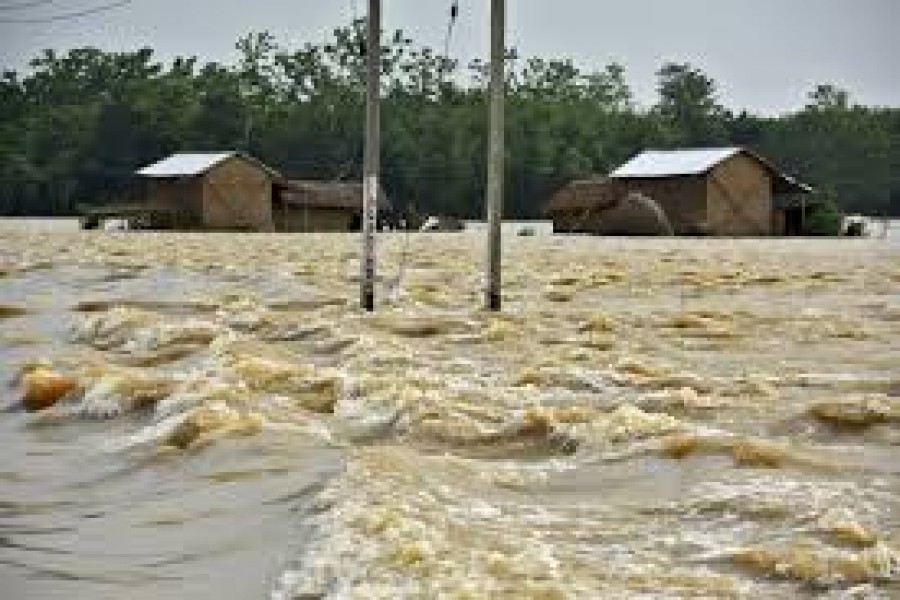Heavy downpour for days together in the Meghalaya and Assam states of India has inundated thousands of villages there. As a result, the major river systems of this region, the Brahmaputra and the Ganges, are overflowing. Bangladesh, particularly, its northern and northeastern districts, being situated directly below those rainstorm-hit Indian states, the floodwater from there has flowed downstream into Sylhet and Sunamganj as flash floods. But the torrential rains in those two districts during the last few days have compounded the flood situation further. The two districts, Sylhet and Sunamganj, are literally under water. With the major roads and highways connecting Sunamganj being under water, the district is now virtually an island. More than 4 million people of these two districts, according reports till Sunday, are marooned by floodwater.
In fact, the sudden deluge has created an unprecedented humanitarian crisis in the area. However, the extreme flood situation is not limited to only the northeastern districts. Reports coming from Rangpur, Kurigram, Nilphamari, Lalmonirhat, Netrakona, Sherpur and Sirajganj are also worrying as the rivers Brahmaputra, Jamuna and other big and small rivers in those districts have been flowing above danger marks. And as forecast by the Bangladesh Water Development Board (BWDB)'s Flood Forecasting and Warning Centre and the Met office, the situation may turn for the worse.
In truth, Bangladesh is no stranger to floods, rainstorms, cyclones and various other kinds of natural calamities visiting the country regularly. Small wonder that the relevant departments of the government have gained sufficient experience and expertise in meeting the emergencies created by such natural disasters. In the past, in many cases, these departments could effectively come to the aid of the victims of such calamities.
But the present flood in Sylhet and Sunamganj seems to have caught the government departments concerned off guard. The flood level in those two northeastern districts have risen so fast that the expected response from either the local population or from the government's department for disaster management has been too slow and inadequate to be of any help to the flood victims.
Finally, the military has been deployed to rescue the flood victims. The situation is more or less the same in the inundated Indian states and there, too, troops have been engaged in helping the flood-affected people. But is what the northern and northeastern districts of Bangladesh are faced with at the moment a one-off experience? Or is it a rehearsal of something still worse to come?
If one is to believe the climatologists, perhaps, what has been happening at the moment in the northern and northeastern districts of Bangladesh is just a rehearsal of future floods, downpours, heatwaves and droughts. Such vagaries of the weather are actually going to increase in frequency as well as intensity. With these calamities originating in the mainland and in the regions beyond the border in the northeastern India are going to join the cyclones and tidal surges of greater ferocity from the Bay of Bengal in the south. And the most destructive of all is going to be the rise in the sea level leading to the salty seawater gradually engulfing the southern districts of Bangladesh. The United Nations Inter-governmental Governmental Panel on Climate Change (IPCC) says, during a decade or so about 17 per cent of the population of the country's southern part have to be relocated elsewhere. But however frightening it may sound, such a doomsday scenario is unavoidable unless humanity is able to arrest a further rise in global temperature.
And without a concerted international effort, the climate-change-related vulnerabilities that Bangladesh is exposed to cannot be effectively addressed. In that case, the only option left before Bangladesh is to increase its level of preparedness against the impending natural disasters of the more destructive kind. And to that end equip itself with the latest knowledge and technology to fight against natural calamities.


